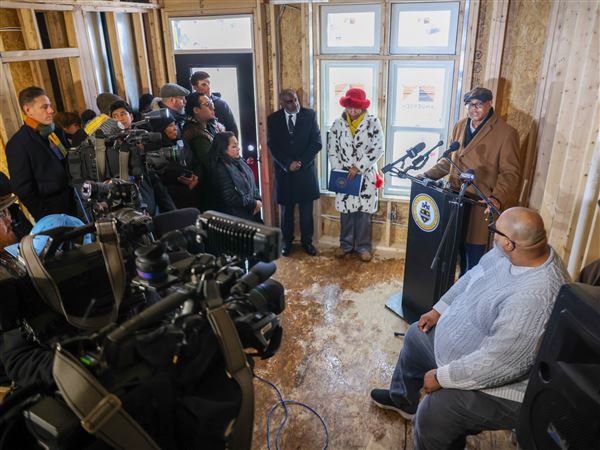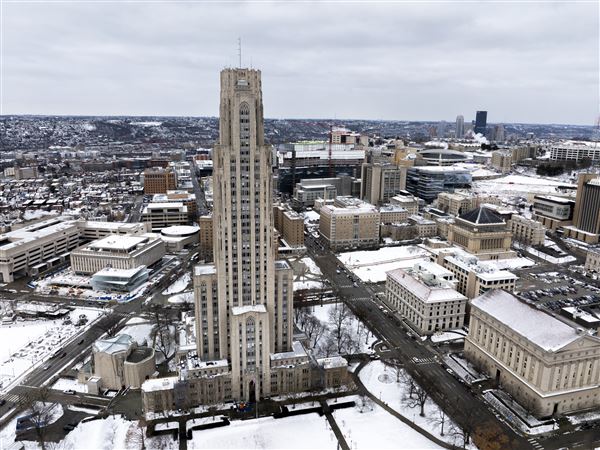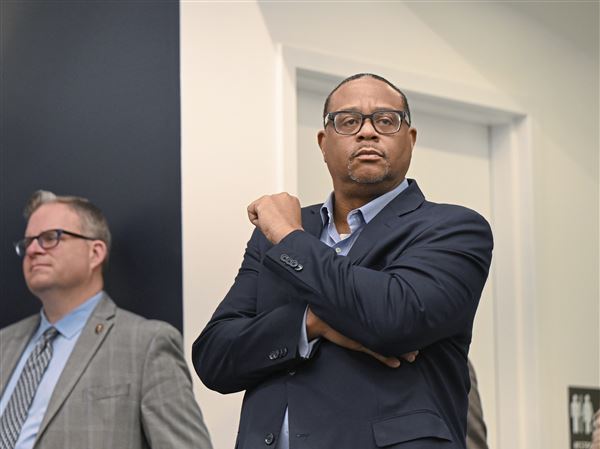There’s a lot of data in health care.
It comes from the sources you would normally think of — like hospital records and medical images — but also some you might not — like your cellphone or your FitBit that tracks your sleep and movement.
A group of researchers at Carnegie Mellon University’s Center for Machine Learning and Health want to understand how we can use all that data to improve health care systems and individuals’ health.
Ari Lightman, a professor of digital media and marketing at CMU and an adviser with the center, is one of those people. He discussed the numbers that are out there, how they could be used, what could go wrong and how COVID-19 changed the conversation.
This interview has been edited for space and clarity.
What are some of the most pressing questions that you and your students and the center want to get answered?
How do we make health care more operationally efficient? We’re coming up with digital tools and digital processes that are designed to create greater levels of efficiency and greater levels of awareness and promoting greater clinical outcomes for patients.
But it’s on top of a system that’s fundamentally broken. That’s problematic.
If you don’t have an operationally efficient system it’s hard to put additional layers of technology and digital components on top of it. So we’re [also] trying to address underlying infrastructure.
[For example, look at] dynamic reconfiguration of hospitals, which is something they had to do this year because they had to create greater levels of capacity within emergency rooms to ventilate patients, to put them on intubation and to really deal with issues they’re having associated with coronavirus. And in doing so, it caused gaps in capacity in other areas.
So dynamically reconfiguring a hospital is something that needs to be done based on data, based on understanding different flow patterns, based on understanding different physician rounding and based on understanding how to alleviate physician needs so they could focus on this area, and one of the ways they are doing that is associated with telemedicine.
What different technologies could help make telemedicine more accessible and offer more information to physicians?
There are different stakeholders that we have to incorporate. There’s the handset manufacturers, chip side manufacturers, the carrier, the apps that reside on the phone. All of these could have some role or some part associated with telemedicine.
So if I go to a doctor’s office, I see a nurse, I see a physician, I talk to the doctor for 30 minutes, [and] I do a variety of screens. But ... I might have various different types of technology that have been recording over a longer period of time that I can just provide to the physician. Maybe check my blood pressure over the past three weeks, whereas if I go into the doctor’s office he does one blood pressure scan. I might have had five cups of coffee that morning and not slept that night, and my blood pressure’s through the roof. Since I’ve been monitoring for three weeks, he could see these changes over time and look for patterns.
There’s this idea of creating more partnership within my health and providing a diary of things that I’ve been collecting and analyzing.
I’m a relatively healthy person, but let’s say I wasn’t and suffered from a variety of different types of illnesses. I might have a specialist who has my information in one repository. I might have another specialist who has my information in another repository.
Bringing all that together in normalization is really difficult for the health community to do. It’s easier for the patient to do ... I might have better capacity to do this than my physician might have, and I can provide that data to them, sort of this idea of bring your own data.
Once you have the data, what algorithms and machine learning tactics are set up?
It could be something as simple as a decision tree analysis, or it could be something associated with clustering different segments to understand high-risk categories.
But a lot of times you might think about the notion of multimodal data. You might have electronic medical record data. ... You might have imaged-based data. ... It might be social data. So, looking at a particular individual holistically might be incorporating all these pieces of data together.
How quickly could these things change?
These things take a long period of time to do, but we’ve seen acceleration in digital health space, especially in light of what happened over the past year.
There’s a lot of countries that are far reaching in this space, creating multiple working groups to look at the future of telehealth. My fear is that we might take a step back in this country because of privacy and security concerns.
You can collect a lot of data from an individual during a telehealth visit. And if you do it in an insecure manner then that sort of opens up a security risk for hackers to steal information. When I visit a physician, theoretically no one’s eavesdropping on a conversation. They’re not storing the data anywhere else unless they have a tape recorder. When you’re having an e-visit, all that information is being recorded.
Do you have your Facebook app open? Do you have other things that are going on in the background that might be collecting information?
It’s getting better, but this opens up a whole slew of risks. But that doesn’t mean that it shouldn’t move forward. We’ve got to look at the benefit and the risk. I think in this case the benefit outweighs the risk if we can address the risks in a clear and understandable manner.
Lauren Rosenblatt: lrosenblatt@post-gazette.com; 412-263-1565.
First Published: May 17, 2021, 10:15 a.m.


















